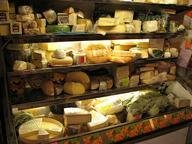Quiz Answer Key and Fun Facts
1. Large holes in this cheese vary from cherry-sized to walnut-sized.
2. Aging in a herbal brine produces a characteristic spicy taste.
3. Cheese with this name can only be made by dairies located above 1,000 m
4. Visit the Vaud canton for the source of this extremely hard cheese
5. This is the classic cheese used in fondue.
6. This cheese is traditionally served partially melted and scraped onto the plate.
7. Traditionally, this cheese is served by shaving it to form a twirl.
8. The process for making this cheese developed from Otto Wartmann's time in an East Prussian town.
9. This soft cheese comes from the French part of Switzerland.
10. This extra-hard cheese from central Switzerland is matured for at least 18 months.
Source: Author
looney_tunes
This quiz was reviewed by FunTrivia editor
WesleyCrusher before going online.
Any errors found in FunTrivia content are routinely corrected through our feedback system.
